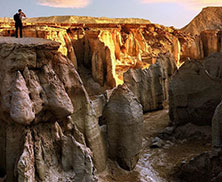-
Hotel Booking
-
- Mashhad hotels
- Tehran hotels
- Isfahan hotels
- Kish island hotels
- Tabriz hotels
- Qeshm island hotels
- Shiraz hotels
-
Mashhad hotels :
-
Sort by Price
-
Sort by Place
-

-
Tehran hotels :
-
Sort by Price
-
Sort by Place
-

-
Isfahan hotels :
-
Sort by Price
-
Sort by Place
-

-
Kish island hotels :
-
Sort by Price
-
Sort by Place
-

-
Tabriz hotels :
-
Sort by Price
-
Sort by Place
-

-
Qeshm island hotels :
-
Sort by Price
-
Sort by Place
-

-
Shiraz hotels :
-
Sort by Price
-
Sort by Place
-

ProfileMessagesSettingsSettingsSettingsSettings
-
- Cities
- Blog
- Discounts

Chaharbagh School
In the eastern side of famous Chaharbagh Avenue in the historical city of Isfahan, there is a splendid monument called Chaharbagh School, marking the last achievement of the Safavid era in Iranian-Islamic architecture.
Also known as Madraseh Soltani, Madraseh Madar-e Shah and Madraseh Imam Sadeq (PBUH), the monument is part of a larger significant 17th-18th century CE complex which was built during the reign of Safavid King Soltan Hossein, comprising a school, the Arts Bazaar, and a caravanserai currently turned into the Luxurious Abbasi Hotel.
The school was the principle structure of the complex which was built under the supervision of King Soltan Hussein’s mother who used the income of the caravanserai and bazaar to finance it.
Entering through a majestic entrance portal and a wooden gate with gold and silver façade on Chaharbagh Avenue, visitors directly leads to a domed octagonal vestibule decorated with ceramic Moqarnas (stalactite) on its roof and then to the main courtyard and a shady garden with tall plane trees and a long pool running in the middle.
Adorned with tile and tile-mosaics walls, the courtyard is surrounded by arcades on two-storey chambers, each giving access to a student’s room as the ground floor includes large rooms and the upper floor has smaller rooms. Among these rooms in the northwestern corner, there is a special room with distinctive features and rich gilt embellishment which once belonged to King Soltan Hussein who used to stay at the college and enjoy the teaching of a clergy and debates of students.
On the south side of the school, there is a nice sanctuary with a two-shelled dome and an imposing porch topped by two minarets extremely ornamented with the best mosaic designs, showing the zenith of Safavid achievements in this field. The sanctuary includes two fine Minbars (pulpits) under the dome; one made of inlaid wood and the other 12-step one carved out of marble stone.
Also, to the east of the sanctuary, there is a roofed prayer hall with a beautiful inlaid door and three mihrabs (decorative panels directed to Mecca) that along with the north porch, two large stone vases, a stone sundial, a stone laver increase the beauty of the school.
Harmonic colors, delicate decorations and amazing calligraphies are special features of the monument showcasing the progress of Iranian artists and architects in that time especially in tile work. Therefore, visiting the site – which is currently a theology school – with all its artistic masterpieces and the fantastic Arts Bazaar on the north side is highly recommended, offering a fascinating adventure for art and history lovers.


